| Poll |
 |
|
|
 |
| Author |
Message |
 |
|
|
 |
|
Advert
|
Forum adverts like this one are shown to any user who is not logged in. Join us by filling out a tiny 3 field form and you will get your own, free, dakka user account which gives a good range of benefits to you:
- No adverts like this in the forums anymore.
- Times and dates in your local timezone.
- Full tracking of what you have read so you can skip to your first unread post, easily see what has changed since you last logged in, and easily see what is new at a glance.
- Email notifications for threads you want to watch closely.
- Being a part of the oldest wargaming community on the net.
If you are already a member then feel free to login now. |
|
 |
![[Post New]](/s/i/i.gif) 2025/02/13 13:30:02
Subject: Alternative Activation - is it desired by the community or not ?
|
 |

Decrepit Dakkanaut
UK
|
It's not just that - we've all had games where one player takes their turn and utterly demolishes their opponent in that one turn. One player getting to move, fire, assault, use psy powers (in every edition bar current one) etc.. They get to do everything they want and their opponent can really only roll on saves and so forth.
This can easily mean that the game is won-lost in a single phase and the ones that come after are mopping up for one player and trying to win with a decimated force for the other.
Sure you can get some epic moments in that, but there's a reason a LOT of other games in the market don't use the same system GW does.
Even AoS tries to mitigate it by having close combat alternate on who attacks first during the turn.
|
|
|
|
 |
 |
![[Post New]](/s/i/i.gif) 2025/02/13 14:58:10
Subject: Alternative Activation - is it desired by the community or not ?
|
 |

Witch Hunter in the Shadows
|
 Overread wrote: Overread wrote:It's not just that - we've all had games where one player takes their turn and utterly demolishes their opponent in that one turn. One player getting to move, fire, assault, use psy powers (in every edition bar current one) etc.. They get to do everything they want and their opponent can really only roll on saves and so forth.
Range and speed is what does it.
There isn't much counterplay to your opponent shelling you from their deployment zone turn 1 - at most you had the counter-deployment and static heavy weapons of 5e which lasted precisely one book into the edition before Cruddace pie-plated all over it.
Something like a game of 5e between witch hunters and orks plays out a little differently to leafblower vs drop pods or railgun spam.
|
|
|
 |
 |
![[Post New]](/s/i/i.gif) 2025/02/13 15:11:01
Subject: Alternative Activation - is it desired by the community or not ?
|
 |

Fixture of Dakka
|
Do people actually experience that anymore? There's enough terrain on the GW boards now that if anything its kind of the opposite. Player 1 often has no targets available to shoot at, which is why towering and indirect have been such dangerous abilities to have in large quantities.
|
|
|
 |
 |
![[Post New]](/s/i/i.gif) 2025/02/13 15:18:56
Subject: Alternative Activation - is it desired by the community or not ?
|
 |

Witch Hunter in the Shadows
|
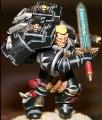 LunarSol wrote: LunarSol wrote:Do people actually experience that anymore? There's enough terrain on the GW boards now that if anything its kind of the opposite. Player 1 often has no targets available to shoot at, which is why towering and indirect have been such dangerous abilities to have in large quantities.
I think in every edition it has been hit and miss depending on armies involved and the table available.
I have a fair bit of scenery and so was asked to provide a table for a demo game a year back, IIRC 9th edition, and there was quite a considerable amount of deepstriking weapons and assault units going on that might have well have been artillery.
|
|
|
 |
 |
![[Post New]](/s/i/i.gif) 2025/02/13 16:50:12
Subject: Alternative Activation - is it desired by the community or not ?
|
 |

Fixture of Dakka
|
Siegfriedfr wrote: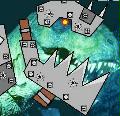 Orkeosaurus wrote: Orkeosaurus wrote:The problem isn't with IGoUGo, it's with the pacing of the game. Too few turns, too much movement and damage per turn, and too many special abilities that can be pulled out of a hat with no warning. Also too much time spent resolving dice-gimmicks.
If that wasn't the case you wouldn't need AA to react to stuff, you'd just react to it when your own turn comes and that would be sufficient.
Frankly i disagree, the problem with igougo is not about the ruleset contained within it, it's about player agency and having fun.
In the current 40k system (or any other main GW games) :
1) the person going second is effectively locked out of playing the game for the first 20-30 minutes. Fine and dandy for competitive players, no fun for normal people.
2) the person going second has an inherent disadvantage since damage is distributed immediately (as opposed to "at the end of the turn").
Let's be frank, the fact that GW maintains that system is because of tradition and the fear of the vocal minority uproar, certainly not because of its quality.
Also, past editions (mostly thinking 7th and earlier) had more turns, less movement, more restrictions on doing damage, no strats/fewer datasheet special abilities, and fewer rerolls/dice gimmicks. Games still took forever, and people were definitely complaining about long periods of non-interaction back then too.
|
ATTENTION. Psychic tests are unfluffy. Your longing for AV is understandable but misguided. Your chapter doesn't need a separate codex. Doctrines should go away. Being a "troop" means nothing. This has been a cranky service announcement. You may now resume your regularly scheduled arguing.
|
|
|
 |
 |
![[Post New]](/s/i/i.gif) 2025/02/13 16:55:38
Subject: Re:Alternative Activation - is it desired by the community or not ?
|
 |

Arch Magos w/ 4 Meg of RAM
|
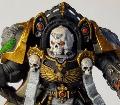 Insularum wrote: Insularum wrote:
1. Melee units are useless, as you get an entire shooting phase to intercept them (on top of a potential reactive move away from them). Factions that rely on melee are dead
melee is fixed by making the charge part of the movement phase Automatically Appended Next Post: Siegfriedfr wrote: Orkeosaurus wrote: Orkeosaurus wrote:The problem isn't with IGoUGo, it's with the pacing of the game. Too few turns, too much movement and damage per turn, and too many special abilities that can be pulled out of a hat with no warning. Also too much time spent resolving dice-gimmicks.
If that wasn't the case you wouldn't need AA to react to stuff, you'd just react to it when your own turn comes and that would be sufficient.
Frankly i disagree, the problem with igougo is not about the ruleset contained within it, it's about player agency and having fun.
In the current 40k system (or any other main GW games) :
1) the person going second is effectively locked out of playing the game for the first 20-30 minutes. Fine and dandy for competitive players, no fun for normal people.
2) the person going second has an inherent disadvantage since damage is distributed immediately (as opposed to "at the end of the turn").
Let's be frank, the fact that GW maintains that system is because of tradition and the fear of the vocal minority uproar, certainly not because of its quality.
In 10th, going second is a MASSIVE advantage, wdym lol?
It was such an advantage that GW forced the winner of the initiative dice roll to go first, because 99% of the time, people would give first turn to their opponent.
Most games, no meaningful attacks are rolled by the player going first
|
|
This message was edited 1 time. Last update was at 2025/02/13 17:00:41
|
|
|
 |
 |
![[Post New]](/s/i/i.gif) 2025/02/13 17:15:31
Subject: Re:Alternative Activation - is it desired by the community or not ?
|
 |

Fixture of Dakka
|
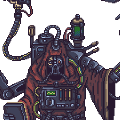 VladimirHerzog wrote: VladimirHerzog wrote:
In 10th, going second is a MASSIVE advantage, wdym lol?
It was such an advantage that GW forced the winner of the initiative dice roll to go first, because 99% of the time, people would give first turn to their opponent.
Most games, no meaningful attacks are rolled by the player going first
I often wonder if people are complaining about the game when they last played and not its current form.
|
|
|
 |
 |
![[Post New]](/s/i/i.gif) 2025/02/13 17:52:41
Subject: Alternative Activation - is it desired by the community or not ?
|
 |

Witch Hunter in the Shadows
|
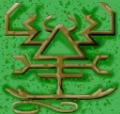 Wyldhunt wrote: Wyldhunt wrote:Games still took forever, and people were definitely complaining about long periods of non-interaction back then too.
Oldhammer suffered from a lot of marginal positional play - standing just outside of range, positioning units for minimum blast impact or visibility. Put a clock on the round and it would have played out exactly the same but with 15 minutes less shuffling, eyeballing, and tape measure waving per turn.
Those millimeters would win you games and lose you friends.
|
|
This message was edited 1 time. Last update was at 2025/02/13 17:52:54
|
|
|
 |
 |
![[Post New]](/s/i/i.gif) 2025/02/13 18:53:56
Subject: Alternative Activation - is it desired by the community or not ?
|
 |

Brigadier General
|
Unless there's a specific design reason for IGOUGO or it's a very small game, I prefer AA.
A few IGOUGO's that I'm happy with:
Song of Blades and Heroes and it's family of games have a modified gambling IGOUGO activation scheme that actually makes the game more tactical and gives additional weight on your decisions around who, when and how far to push your luck during activation.
A game like Kings of War uses IGOUGO to speed the game up quite a bit and deliberately restricts actions of any kind to the active player so you can even play with a chess clock.
Games like Original Necromunda or Mordheim have IGOUGO because GW, but it works pretty well in those situations because you're dealing with so few figures that activating them all together can give you a bit of synergy.
For most other situations, I'm going to lean hard towards AA. It's more interactive, more reactive, more balanced, and just more fun.
Sgt. Cortez wrote:The lack of AA is one of the reasons we moved on to OPR. And it's also probably the main reason some of our group say: For all the flaws of OPR, we wouldn't want to miss AA and therefore won't go back to 40K  ....
...In 40K you can empty a bottle of beer during your opponent's turn, in OPR you can only take a nip once in a while. That would make 40K a pretty laid back game if you didn't have to read up on a thousand special rules every game.
I agree. Our reasons for moving to OPR were more about cost and complexity, but our club definitely prefers alternating Unit Activation in most games
LunarSol wrote:I generally prefer Alternating Activation games, but their advantages kind of fall apart with bigger game sizes and varied activation values. When you get more than 5-6 activations the system starts to feel unresponsive and if players have notably different activation counts or values it feels more like you're gaming the activation system than playing the game. Alternating Activations also tend to work better with relatively low attrition so that the above remains consistent.
Unless I'm missing something, I would say hard disagree. I find alternating unit activation to actually be even better for larger games because otherwise the time between players activating their units can be long and the advantages of activating everything at once (especially on first turn) can be massive. In OPR, we play massive games and alternating unit activation keeps it from becoming a slog.
|
|
This message was edited 2 times. Last update was at 2025/02/13 19:00:05
|
|
|
 |
 |
![[Post New]](/s/i/i.gif) 2025/02/13 19:54:13
Subject: Alternative Activation - is it desired by the community or not ?
|
 |

Fixture of Dakka
|
 Eilif wrote: Eilif wrote:
LunarSol wrote:I generally prefer Alternating Activation games, but their advantages kind of fall apart with bigger game sizes and varied activation values. When you get more than 5-6 activations the system starts to feel unresponsive and if players have notably different activation counts or values it feels more like you're gaming the activation system than playing the game. Alternating Activations also tend to work better with relatively low attrition so that the above remains consistent.
Unless I'm missing something, I would say hard disagree. I find alternating unit activation to actually be even better for larger games because otherwise the time between players activating their units can be long and the advantages of activating everything at once (especially on first turn) can be massive. In OPR, we play massive games and alternating unit activation keeps it from becoming a slog.
I prefer smaller games in general, but to this specific point, the issue with alternating activations in larger games is that the game really warps itself around gaming the activation system. They all devolve into weird games of red rover where you try to stall out your opponent's heavy hitters in order to attack with your own without reprisal. It also tends to create really weird list building incentives and greatly limit the kinds of viable army designs. Large expensive models are almost impossible to make viable and anything with an elite baseline becomes nearly unplayable. It's almost impossible to create viable combo pieces unless they're so cheap they also act as a pass token and generally speaking, I just find army design in what I will call unrestricted AA games to be very focused on things that pad out the activation count.
Large activation counts also create a weird gameplay situation where that sense of responsiveness that makes AA feel good diminishes as activation counters get larger. The first model to activate in a 10+ activation army becomes a very dead piece on the board in terms of what its position offers and the very long time between when it gets to act again gets really noticeable. While that's true to an extent in IGUG, since your units activate together, the order often isn't as impactful and you don't have that same feeling of something being unresponsive.
None of that is to say I don't prefer AA, just that what I like about it tends to fall off when armies have large numbers of activations and those activations have significantly different values. It feels great in a back and forth between 5-6 models who are all valued within a point or two from one another. I think there's ways that could be applied to a game with 40k style list building, but when its just applied to game like this without alterations, it just turns into this weird distraction of taking max Grots so the opposing Knights are done activating while I take an unconstested turn with all the real units in my Ork army. Just too much gamey nonsense for my liking.
|
|
|
 |
 |
![[Post New]](/s/i/i.gif) 2025/02/13 20:11:13
Subject: Alternative Activation - is it desired by the community or not ?
|
 |

Perfect Shot Dark Angels Predator Pilot
|
I haven't read the full thread (skimmed most of it), but I want to add to the discussion my thoughts about AA which I haven't really seen discussed here or in other places.
My first wargame was Dropzone Commander with the alternate activation of battlegroups - small sub organizations within a players army. I believe the last apocalypse version hada similar activation mechanic.
I really liked this approach. Each player typically had 5 to 6 battlegroups, which made the order of activation important, while it reduced the worst alpha strike (positioning and the importance of infantry on objectives made going first actually quite undesirable).
I would prefer 40k to go into this direction, but I'm not sure how well this can be implemented.
The other AA mechanic I encountered recently was in Five parsecs from home: Tactics, where each player rolls 3D6 before his activation. The player must activate that many units with a higher training score that have not yet activated this battleround plus one additional. So each turn, a player may activate 1 to four units, with the opportunity to delay the activation for one turn. This makes it a lot more random (which might not be desired) but forces the player to adapt their plan on the spot. Combined with the reduced lethality and options for units to hide (and to detect hidden units) requires a lot of positioning and a well thought of order of activation. I had a lot of fun with it. This might be better suitable for 40k Games between 1000 and 2000 points, but requires the introduction of the training stat.
Finally, AA implementations that I don't like:
- as in chess: I find repetitive activation of the same unit quite immersion breaking.
- only one unit until all activated: I prefer activating several units as it sells the combined arms effect better. But depends on game size
- activation per phase: I tested this once and it was really annoying, it devolved into a cat and mouse game. Move to line up shot/charge, opponent moves out of sight/range, do nothing, repeat. At least until round three, then the second player has to commit to get the objectives, must expose himself so he might return fire after the first players shooting round, and then the game ended in mutual annihilation just 2 turns later then usual.
|
|
|
 |
 |
![[Post New]](/s/i/i.gif) 2025/02/13 23:33:37
Subject: Alternative Activation - is it desired by the community or not ?
|
 |

Witch Hunter in the Shadows
|
Brickfix wrote:I would prefer 40k to go into this direction, but I'm not sure how well this can be implemented.
By FoC perhaps?
Halve, third, or quarter the turns.
Player 1 - All fast and elite units activate
Player 2 - All fast and elite units activate
Player 1 - All heavy and troop units activate
Player 2 - All heavy and troop units activate
Or intermix it so that the attacker and defender are fundamentally different - i.e. player 1 fast and elite, player 2 heavy and troop, player 1 heavy and troop, player 2 fast and elite, repeat.
|
|
|
 |
 |
![[Post New]](/s/i/i.gif) 2025/02/14 00:06:11
Subject: Alternative Activation - is it desired by the community or not ?
|
 |

Da Head Honcho Boss Grot
|
A.T. wrote: Wyldhunt wrote: Wyldhunt wrote:Games still took forever, and people were definitely complaining about long periods of non-interaction back then too.
Oldhammer suffered from a lot of marginal positional play - standing just outside of range, positioning units for minimum blast impact or visibility. Put a clock on the round and it would have played out exactly the same but with 15 minutes less shuffling, eyeballing, and tape measure waving per turn.
Those millimeters would win you games and lose you friends.
I remember the need to disperse your units to avoid getting wiped out by blast templates took a huge amount of time. But there's also a difference between pacing and speed; a 1000pt and 3000pt game will have roughly the same pacing but turns take longer to resolve in 3000pts. Likewise dice-gimmicks don't necessarily change the pacing, they just take more time to resolve (though that can also be a problem). Pacing could be measured by how much progress is made towards the end of the game each turn, rather than how many minutes each turn takes. Though you wouldn't want to make the pacing super-slow either, obviously.
In terms of the sheer time needed to resolve a round, I suspect IGoUGo is faster than AA, all else being equal. I can certainly move 50 models at one time faster than 10 models 5 different times. But you do have a longer stretch of time between getting to do something so that's a real tradeoff, and that gets worse the larger game is. I guess middle-ground solutions like battle-groups are halfway between each.
One idea that I like to bat around is an action/reaction system, where the off-turn player has a single thing they can do with each unit during their opponent's turn (Take Cover, Overwatch, Flee, Counter-Attack). I guess that would be another hybrid system.
|
Anuvver fing - when they do sumfing, they try to make it look like somfink else to confuse everybody. When one of them wants to lord it over the uvvers, 'e says "I'm very speshul so'z you gotta worship me", or "I know summink wot you lot don't know, so yer better lissen good". Da funny fing is, arf of 'em believe it and da over arf don't, so 'e 'as to hit 'em all anyway or run fer it.
|
|
|
 |
 |
![[Post New]](/s/i/i.gif) 2025/02/14 01:27:37
Subject: Alternative Activation - is it desired by the community or not ?
|
 |

Fixture of Dakka
|
The way GW does alternate activation/reactions/etc it would not be faster. The main problem for AA to be really efficient is the fact that GW is trying to mix narrative/skirmish style rules with mass combat of a large scale war game. All those LoS problems, going through/around buildings, "death windows" etc are only a problem, because part of the rules is writen as if we were playing with 20 models per side. And aside for knights, not even custodes do that.
Simplification and removal of narrative/skirmish elements combined with an AA (per unit) system could make the game go a lot faster, and feel more dynamic. The question is can GW write it, and write it without instantly adding exeptions that break the system.
For example the "FA goes before HS" idea is cool, but it becomes less cool when some armies get the "and all their HS are actualy just as fast as FA".
|
If you have to kill, then kill in the best manner. If you slaughter, then slaughter in the best manner. Let one of you sharpen his knife so his animal feels no pain. |
|
|
 |
 |
![[Post New]](/s/i/i.gif) 2025/02/14 16:57:15
Subject: Alternative Activation - is it desired by the community or not ?
|
 |

Battleship Captain
|
I used to be very much in "Alternating Activation best activation" champ. But after much experience with it, it really has a lot of flaws.
In Necromunda, AA is all about stalling out your opponent to hammer activate your power combo at the end. Which also makes it a bit of a noob trap as new players don't really 'get' that.
AA also basically stops combos, as your opponent gets to shut down the combo in between, or just straight up a unit walks away from their support before the support activates.
I think AA would require far bigger changes to 40k than just bolting it on.
My local group tried bolting on AA to 40k for our annual apocalypse game, and it was better than IgoUgo but did have issues.
We started with just "3 activations each, back and forth", but that made transports and characters redundant. Would you like to activate a Rhino or deepstrike another Terminator squad?
So next year we added that when activating a unit you could activate an accompanying character and transport alongside. Which helped.
But it still felt like you were basically firing off missiles.
40k has so much mobility and lethality that there's basically no manoeuvring involved. Most games I know turns 1-2 very little real fighting happens as players vie for positioning. Not so in 40k. But I feel like that's a feature of 40k - violence starts immediately.
I think 40k would be better off with a good reaction system. Not like Heresy, because that system kinda sucks, but a good system.
Perhaps even add some kind of "seize the initiative" built in wherein a players turn could end prematurely.
This sort of thing is quite common in historical battles, Bloodbowl uses it too.
It's good because it adds a new level of tactics/risk management. Do you start with the big risky moves? Or do the smaller, safer, moves first?
IgoYgo isn't bad, it has many advantages on AA.
But "I beat you up, you take it without lube for 30 minutes, then we reverse roles" is bad.
|
|
|
 |
 |
![[Post New]](/s/i/i.gif) 2025/02/14 19:51:41
Subject: Alternative Activation - is it desired by the community or not ?
|
 |

Dakka Veteran
|
In our version of the game, we still use movement, shooting and assault phases but we also use a reaction phase.
The current player may either move or shoot first, then the other player may react then or wait until before the assault phase (reacting after player A moves & shoots).
This allows the defensive player to decide when's the best time to react, but each unit eligible to react must pass a Leadership test, and their options are still somewhat restricted. However, they are still powerful enough to make an attacker be more cautious since it could disrupt an attack before it even starts.
|
|
|
 |
 |
![[Post New]](/s/i/i.gif) 2025/02/14 20:04:24
Subject: Alternative Activation - is it desired by the community or not ?
|
 |

Ultramarine Chaplain with Hate to Spare
|
 amanita wrote: amanita wrote:In our version of the game, we still use movement, shooting and assault phases but we also use a reaction phase.
The current player may either move or shoot first, then the other player may react then or wait until before the assault phase (reacting after player A moves & shoots).
This allows the defensive player to decide when's the best time to react, but each unit eligible to react must pass a Leadership test, and their options are still somewhat restricted. However, they are still powerful enough to make an attacker be more cautious since it could disrupt an attack before it even starts.
^I'm curious as to how this works. Is this done with AA one unit at a time or is this entire-army, then entire army gets to react? Are there penalties for reacting (like to-hit modifiers or loss of following turn)? I'm sorta imagining this system bogs down a bit (and maybe that's fine) but I'm having trouble picturing it.
Maybe every unit gets to do more in a game because they get their normal turn plus a limited reaction "turn".
I'm intrigued. Sorry for all the questions!
|
|
|
|
 |
 |
![[Post New]](/s/i/i.gif) 2025/02/14 20:39:41
Subject: Alternative Activation - is it desired by the community or not ?
|
 |

Oozing Plague Marine Terminator
|
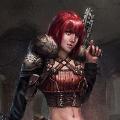 kirotheavenger wrote: kirotheavenger wrote:I used to be very much in "Alternating Activation best activation" champ. But after much experience with it, it really has a lot of flaws.
In Necromunda, AA is all about stalling out your opponent to hammer activate your power combo at the end. Which also makes it a bit of a noob trap as new players don't really 'get' that.
AA also basically stops combos, as your opponent gets to shut down the combo in between, or just straight up a unit walks away from their support before the support activates.
I think AA would require far bigger changes to 40k than just bolting it on.
My local group tried bolting on AA to 40k for our annual apocalypse game, and it was better than IgoUgo but did have issues.
We started with just "3 activations each, back and forth", but that made transports and characters redundant. Would you like to activate a Rhino or deepstrike another Terminator squad?
So next year we added that when activating a unit you could activate an accompanying character and transport alongside. Which helped.
But it still felt like you were basically firing off missiles.
40k has so much mobility and lethality that there's basically no manoeuvring involved. Most games I know turns 1-2 very little real fighting happens as players vie for positioning. Not so in 40k. But I feel like that's a feature of 40k - violence starts immediately.
I think 40k would be better off with a good reaction system. Not like Heresy, because that system kinda sucks, but a good system.
Perhaps even add some kind of "seize the initiative" built in wherein a players turn could end prematurely.
This sort of thing is quite common in historical battles, Bloodbowl uses it too.
It's good because it adds a new level of tactics/risk management. Do you start with the big risky moves? Or do the smaller, safer, moves first?
IgoYgo isn't bad, it has many advantages on AA.
But "I beat you up, you take it without lube for 30 minutes, then we reverse roles" is bad.
Oathmark and other systems have mechanics that give hero models the ability to command more than unit at once (connected with a steep points cost). This means that combos are possible.
|
|
|
 |
 |
![[Post New]](/s/i/i.gif) 2025/02/15 01:16:19
Subject: Alternative Activation - is it desired by the community or not ?
|
 |

Decrepit Dakkanaut
UK
|
You might also see some combos shift in nature. Eg instead of casting a buff on a specific unit a buff model might instead might just have an area effect "every model in X gets the bonus" or a "select 1 model in X amount of inches and it gains the bonus"
So you've got your combo, it just doesn't rely on necessarily activing the buff model first
So I think there are certainly ways to setup combos and many AA games have their own methods for this.
|
|
|
|
 |
 |
![[Post New]](/s/i/i.gif) 2025/02/15 08:10:26
Subject: Alternative Activation - is it desired by the community or not ?
|
 |

Sneaky Lictor
|
Are combos even desirable in the first place? Maybe it's my age showing through, but I'd be happy to see them go.
Regarding alternate activation's "issues", I'd strongly recommend looking at game systems that actually have AA before assuming they're intrinsic. Bolt action for example handles out-activating and leader units providing more activations (newcromunda has this too iirc). Most of the problems raised here have had a solution for years.
|
|
|
 |
 |
![[Post New]](/s/i/i.gif) 2025/02/15 09:11:44
Subject: Alternative Activation - is it desired by the community or not ?
|
 |

Decrepit Dakkanaut
UK
|
Combos are kind of a buzzword I feel - in the past it was just supporting units.
GW has also shifted from one psy unit with multiple abilities toward having more individual units with fewer abilities. As such some have become much more dedicated support units and "combo" units.
The Combo is just something simple like a buff unit casting a buff ability on a target squad before using that squad to perform an action.
These days you might layer that combo with a commandpoint activated ability as well. So its still basic*. AA can easily include those.
We might even see a shift toward more casual unit attachments; that's how Warmachine coped with a few by having specialists that attach to specific units. So AA could see a lot more psychers and named leaders joining squads formally so that their "combo" buff/bonus is simply part of that single unit activation.
*though I still argue that there's almost too many command point abilities and they way they come in and out of the game makes them fiddly to memorise compared to on-the-profile unit abilities.
|
|
|
|
 |
 |
![[Post New]](/s/i/i.gif) 2025/02/15 16:34:32
Subject: Alternative Activation - is it desired by the community or not ?
|
 |

Da Head Honcho Boss Grot
|
If the game had a large number of units you could have an escalating number of activations.
Player A activates 1 unit
Player B activates 1 unit
Player A activates 2 units
Player B activates 2 units
Player A activates 3 units
Player B activates 3 units
etc
(That assumes a game where going first in the round is advantageous.)
|
|
This message was edited 1 time. Last update was at 2025/02/15 16:41:44
Anuvver fing - when they do sumfing, they try to make it look like somfink else to confuse everybody. When one of them wants to lord it over the uvvers, 'e says "I'm very speshul so'z you gotta worship me", or "I know summink wot you lot don't know, so yer better lissen good". Da funny fing is, arf of 'em believe it and da over arf don't, so 'e 'as to hit 'em all anyway or run fer it.
|
|
|
 |
 |
![[Post New]](/s/i/i.gif) 2025/02/27 17:44:49
Subject: Alternative Activation - is it desired by the community or not ?
|
 |

Deadshot Weapon Moderati
|
I figured people who want AA should go play different games like OPR or WOTR or whatnot. These things are available if you're not weirdly hung up on playing Warhammer 40k but not Warhammer 40k.
|
|
|
 |
 |
![[Post New]](/s/i/i.gif) 2025/02/28 07:23:59
Subject: Re:Alternative Activation - is it desired by the community or not ?
|
 |

Sneaky Chameleon Skink
Western Montana
|
Well, by golly, I've been struggling uphill both directions through a snowstorm since 2nd edition 40k just to play...
Yeah, no one cares. I get it. That said, I played 40k and Fantasy way back when, and the problems then were way more obvious.
I can't tell you the number of 40k games I played at tournaments twenty years ago that were over on turn 1, when you didn't get to go first and because of the rules and weapons might pick up 25%-33% of your army before you ever got a chance to move a model. It was a big reason I quit playing 40k in any form of competitive environment, the IGO-UGO first turn death stupidity. A lot of games came down to a single die roll to see who went first. They unleashed their purpose-built list, and when it was time to go second, you did it with a ridiculously reduced chance of victory.
I focused on Fantasy after that, which had it's own unique problems depending on edition (Heroes are Gods! Heroes suck and units rule in the next edition! Magic is Godly! Magic sucks in the next edition! then, 8th, where if you didn't bring a L4 mage you didn't win), but at least the game wasn't over before it began based on a single die rolled.
I've played everything GW, Confrontation, Wargods of Aegyptus, SFB, and many other games. The best of them are still earlier editions of Mordheim, Necromunda (because of the concepts of carrying over gangs from one game to another with experience, wounds, better gear, etc.), and Epic, because of the activation sequence/trying to retain initiative concept of the games. Or Wargods, with face-down activations, and similar games.
IGO-UGO is always the worst of worlds.
ALL OF THAT SAID, I think Warhammer 40K has come light-years beyond what it used to be with first-turn annihilations, to the point where going second isn't a death sentence, and can actually be beneficial for a smart player who has the final chance to rack up VP's in whatever manner, objective claiming, unit killing, whatever the battle rules require. We seem to be well and truly past the era of "all that matters is how many enemy units you kill how fast to gain their points value in VP's" and into a new era where there's some thought put into how VP's are gained. That really makes 40K a much better game overall.
Still, I do prefer alternating activation games, like Epic or Wargods. Or games where what happens to your warband carries over into future games, meaning you put a bit more thought into their fates. 40K will never be that, especially on a competitive level. You'll ignore anything related to fluff ("Eldar are a dying race, but put their citizens and breeding stock into Kleenex(tm) brand armor and give them submachine guns to rush into the face of the enemy! Brilliant!), and sacrifice whatever models you need to while you get an entire turn to move and attack mostly free of interference (short some spent CP's) before your opponent tries to counter that with whatever special rules they can dredge out of their Codex.
40K is a deeply flawed game that gets different, and occasionally better, with new iterations. It's also usually fun to play, right up until Codex Creep and such sets in just before a new edition is released and you get to spend a bunch of money again. It's the most popular game going, but far from the best.
Could we do AA in 40K? It's been tested before. It would require a full re-write, and serious playtesting. Neither of those things is something GW has ever been interested in. The churn out rules, minis, books, errata, etc. etc. etc. and leave it to you to playtest while they make money. It's been that way since the 80's. It's not going to change.
Enjoy 40k, or don't. Play other games, or don't. Make up your own rules for you and your friends to use in your garage, or don't. GW doesn't care. They never have. Their only goal is to sell overpriced minis. That's coming from someone who's been doing this almost 40 years. 36 to be more exact. Have fun, spend what you can afford, and don't stress over the rules too much. They change every few years anyway.
|
|
This message was edited 3 times. Last update was at 2025/02/28 20:31:00
|
|
|
 |
 |
![[Post New]](/s/i/i.gif) 2025/03/06 19:54:40
Subject: Re:Alternative Activation - is it desired by the community or not ?
|
 |

Brigadier General
|
Kagetora wrote:
I focused on Fantasy after that, which had it's own unique problems depending on edition (Heroes are Gods! Heroes suck and units rule in the next edition! Magic is Godly! Magic sucks in the next edition! then, 8th, where if you didn't bring a L4 mage you didn't win), but at least the game wasn't over before it began based on a single die rolled.
I've played everything GW, Confrontation, Wargods of Aegyptus, SFB, and many other games. The best of them are still earlier editions of Mordheim, Necromunda (because of the concepts of carrying over gangs from one game to another with experience, wounds, better gear, etc.), and Epic, because of the activation sequence/trying to retain initiative concept of the games. Or Wargods, with face-down activations, and similar games.
I agree with most of what you've said. However, a few threads I'd like to pull on, mostly about WHFB, Mordheim and Necromunda.
In my opinion WHFB and Mordheim are probably less-bad options for IGOUGO because you don't have the majority of an army being able to shoot, charge on turn one. Fantasy and KoW (My preferred mass fantasy battle rank and flank game) just don't have the same "Alpha Strike" advantage that going first gives you in 40k.
As for Necromunda 1995, if played properly, with heavy multi-level terrain (Ideally Mordheim would be similarly dense), each player is usually going to get at least a turn to move around, spread-out, etc before being in the direct line-of sight of the majority of the opponent's force.
Which leads me back to 40k and other IGOUGO games in general, I left 40k well over a decade ago and I will never defend IGOUGO as the best option, but....
Is IGOUGO significantly "less-bad" on tables where a higher amount of cover, and/or minimal interaction on turn 1 is the norm?
|
|
|
|
 |
 |
![[Post New]](/s/i/i.gif) 2025/03/06 20:03:34
Subject: Re:Alternative Activation - is it desired by the community or not ?
|
 |

Fixture of Dakka
|
 Eilif wrote:
Is IGOUGO significantly "less-bad" on tables where a higher amount of cover, and/or minimal interaction on turn 1 is the norm? Eilif wrote:
Is IGOUGO significantly "less-bad" on tables where a higher amount of cover, and/or minimal interaction on turn 1 is the norm?
Generally speaking, the issue with heavy turn 1 interaction is the feeling that you just have stuff done to you before you have the opportunity to make decisions. Heavy terrain can help with this a lot by both minimizing how much of that happens, but also because it makes the decisions made during deployment feel more meaningful.
You need to be a little careful to ensure that the game still demands moving into the middle of the table or you can run a real risk of punting the issue to player 2 or worse, make turtling in the deployment a dominant strategy.
|
|
|
 |
 |
![[Post New]](/s/i/i.gif) 2025/03/06 20:49:15
Subject: Re:Alternative Activation - is it desired by the community or not ?
|
 |

Brigadier General
|
 LunarSol wrote: LunarSol wrote: Eilif wrote:
Is IGOUGO significantly "less-bad" on tables where a higher amount of cover, and/or minimal interaction on turn 1 is the norm? Eilif wrote:
Is IGOUGO significantly "less-bad" on tables where a higher amount of cover, and/or minimal interaction on turn 1 is the norm?
You need to be a little careful to ensure that the game still demands moving into the middle of the table or you can run a real risk of punting the issue to player 2 or worse, make turtling in the deployment a dominant strategy.
This is very true. I'm a big believer in intentional scenarios. Sometimes a scenario let's one player turtle and part of the fun is seeing if you can bust it up, but I agree that in general the scenario should encourage maneuver and tactics.
In a basic seize-the-objectives scenario I'll often discuss with my opponent mutual placing of objectives to in interesting, thematic or less-initially-advantageous places. Makes for much more interesting games than simply 'hey I'll put my objectives by my toughest units.
|
|
|
|
 |
 |
![[Post New]](/s/i/i.gif) 2025/03/06 21:43:23
Subject: Re:Alternative Activation - is it desired by the community or not ?
|
 |

Tzeentch Veteran Marine with Psychic Potential
|
For me the main problem with AA, which I believe several people have already discussed as well, is that I don't think it works well with what 40k is. AA doesn't work well with high unit counts (and lets face it I don't think unit counts are going down in 40k), and it really doesn't work well when there is a vast disparity in unit power between units that can be activated. For example, the difference in activating a tank squadron and an infantry squadron in old style epic did not have the same gap in power that activating a Rogal Dorn tank and a single infantry squad has in 40k, let alone the extreme of a unit of cultist compared to a knight. You could group some units together, but that just adds levels of complexity, and doesn't fix the issue (how many guardsmen need to go to equal a knight?) I just don't see AA working in 40k as I think it would just push the game to only bring the biggest baddest units and have as minimal activation as possible which isn't good either.
As an alternative, I like what GW has been moving towards, which is IGOUGO but with a lot of defensive reactionary abilities via unit abilities and stratagems. With the right terrain (to mitigate the turn 1 issues) and more reactive style stratagems I think would be more interactive than just AA being added in.
That is my two cents.
|
|
|
 |
 |
![[Post New]](/s/i/i.gif) 2025/03/06 21:57:35
Subject: Alternative Activation - is it desired by the community or not ?
|
 |

Dakka Veteran
|
 Insectum7 wrote: Insectum7 wrote: amanita wrote: amanita wrote:In our version of the game, we still use movement, shooting and assault phases but we also use a reaction phase.
The current player may either move or shoot first, then the other player may react then or wait until before the assault phase (reacting after player A moves & shoots).
This allows the defensive player to decide when's the best time to react, but each unit eligible to react must pass a Leadership test, and their options are still somewhat restricted. However, they are still powerful enough to make an attacker be more cautious since it could disrupt an attack before it even starts.
^I'm curious as to how this works. Is this done with AA one unit at a time or is this entire-army, then entire army gets to react? Are there penalties for reacting (like to-hit modifiers or loss of following turn)? I'm sorta imagining this system bogs down a bit (and maybe that's fine) but I'm having trouble picturing it.
Maybe every unit gets to do more in a game because they get their normal turn plus a limited reaction "turn".
I'm intrigued. Sorry for all the questions!
Apologies for not responding earlier; I sometimes miss these threads.
All units have a chance to react when they are near enough to the enemy or are targeted by enemy fire, after the enemy moves or shoots. No penalties to reacting, but only half (round up) the hits count, & heavy/ordnance weapons are restricted by which direction they are facing (if a model has a fixed gun the player may elect to indicate a weapons's facing during their turn).
Not sure if that helps. 
|
|
|
 |
 |
![[Post New]](/s/i/i.gif) 2025/03/07 03:34:57
Subject: Re:Alternative Activation - is it desired by the community or not ?
|
 |

Brigadier General
|
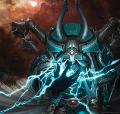 xeen wrote: xeen wrote:For me the main problem with AA, which I believe several people have already discussed as well, is that I don't think it works well with what 40k is. AA doesn't work well with high unit counts (and lets face it I don't think unit counts are going down in 40k), and it really doesn't work well when there is a vast disparity in unit power between units that can be activated. For example, the difference in activating a tank squadron and an infantry squadron in old style epic did not have the same gap in power that activating a Rogal Dorn tank and a single infantry squad has in 40k, let alone the extreme of a unit of cultist compared to a knight. You could group some units together, but that just adds levels of complexity, and doesn't fix the issue (how many guardsmen need to go to equal a knight?) I just don't see AA working in 40k as I think it would just push the game to only bring the biggest baddest units and have as minimal activation as possible which isn't good either.
As an alternative, I like what GW has been moving towards, which is IGOUGO but with a lot of defensive reactionary abilities via unit abilities and stratagems. With the right terrain (to mitigate the turn 1 issues) and more reactive style stratagems I think would be more interactive than just AA being added in.
That is my two cents.
What about 40k would makeactivating different powered units so problematic?
Grimdark has AA and units as differently powered as 40k. There are benefits and drawbacks to having more-lower or fewer-higher powered units. I've played tons of Grimdark, often with widely differently proportioned units and it's never been a problem.
|
|
|
|
 |
 |
|
|